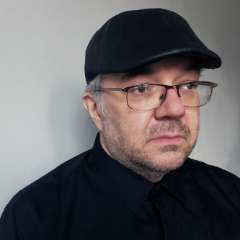The Tippet Rise Art Center is a 12,000 acre ranch in south central Montana, a small part of the 34,375-square-mile expanse known as the Greater Yellowstone Ecosystem. Founded by painter Cathy and pianist/poet/photographer Peter Halstead, the center launched its summer series of classical concerts in 2016 and also serves as a recording studio and, occasionally, a cinema.
In addition to weekend performances of chamber music, Tippet Rise is home to a collection of ten large, outdoor sculptures, including works by Alexander Calder, Patrick Dougherty, Mark di Suvero and the Madrid design firm Ensamble Studio. To spend a weekend on the center's rolling hills, near the small town of Fishtail, is not to get lost in art or music so much as it is to get lost in space. Massive sculptures and major achievements of musical expression shrink in the breathtaking environs, becoming mere accoutrement to the Beartooth Mountains and the sky overhead.
The weekend of 23 August was an unusually full one in the music series, with the usual three concerts bumped up to five plus an announced “pop up” non-ticketed performance intended to be discovered by the hikers and bikers (and perhaps the wild deer and herds of sheep) who while away their hours on the ranch's green hills and valleys.
Artistic director Pedja Muzijevic opened the Friday evening concert at one of Tippett's many Steinway concert grands, playing a youthful piece by JS Bach, written when he was still a teen. In the scheme of the master's incomparable output, the relative immaturity of Capriccio on the Departure of a Departed Brother shows; it's rather thin both in structure and expression. Thematically, it's not a final goodbye but a farewell to a friend heading off on a journey, ending in an upbeat fugue marking his safe arrival. Muzijevic gave the opening Adagio section a spritely read before allowing the melancholy to slowly set in. But throughout there was an assured strength, the odd, repeating figure of the last section bouncing impeccably from one hand to the other, the isolated staccato final theme given not a moment of hesitation.
Muzijevic then read the 1974 Samuel Beckett poem Something There, an opaque reflection on the internal and external which lent well to Berio's Sequenza VII for solo oboe, as performed by the remarkable James Austin Smith. He delivered the multiphonic explorations without undue pressure on the reed, without stressing the instrument, and with what felt to be a shocking regularity of breath, to the point that it began to sound like a lost bagpipe sequenza with the drone carried on by two violinists sitting on either side of the stage.
So melded were the instruments' voices that it made for a convincing sonic illusion when he took the mouthpiece from his mouth and the violins continued to hold his note. Dropping, then, the pretense of keeping the sound sources secret, Smith grew increasingly animated; indeed, the spectacle took on something of the character of a snake charmer and shruti box (a conceivable cultural amalgam for the absurdist Italian).
After Berio's shifting pitches and tonalities, the opening of Dvořák's Piano Quartet no. 2 in E flat major felt like the stomping of the dinosaurs that once roamed this land, and in the acoustically pristine Olivier Music Barn seemed impossibly loud. Eventually in their persistence they released the room from blurry Berio and made the barn into their own salon. By the end of the opening Allegro con fuoco movement, cellist Sæunn Thorsteinsdóttir in particular was displaying strength and sensitivity in rapid succession.
The audience erupted after the first movement, leaving Thorsteinsdóttir the opening theme of the second with which to break their hearts. By the time violinist Benjamin Beilman staked his ground as the proper first voice (is there such contention within Dvořák's score?), the strings seemed poised to rise from the stage, taking Muzijevic and his piano with them. But Dvořák's love for the cello soon returned the song to Thorsteinsdóttir. The depth and beauty in her playing was only reinforced by her smiles, nods, slow glances to the other strings and, occasionally, momentarily, appearing on the verge of tears.
It's a long, emotional whirlwind of a piece and for some reason (or maybe for that reason) one of Dvořák's lesser played chamber works. After the subtlety of the first half of the program, it was frankly a little hard to accept Dvořák's shouted demands. Ultimately, however, in the hands of these players, it was even harder to deny them.
Kurt's press trip to Tippet Rise was funded by Tippet Rise Art Center


